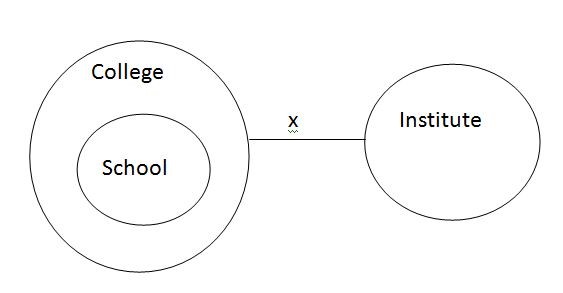Question
Statements: All schools are colleges. No
college is an institute. Conclusions: I. Some colleges are not institutes. II. Some schools are institutes. In each question below are given two statements followed by two conclusions numbered I and II. You have to take the two given statements to be true even if they seem to be at variance with commonly known facts and then decide which of the given conclusions logically follows from the two given statements, disregarding commonly known facts.Solution
No college is a institute (E) ⇒ I.I. ⇒ Some colleges are not institutes (O). Hence, conclusion I will follow. A + E = E ⇒ I.I. ⇒ O. Hence, conclusion II will not follow. Alternate Method: 
According to the FAO's 2024 State of Food and Agriculture report, how much are the hidden costs associated with India’s agrifood systems, mainly drive...
Which two Indian American scientists were awarded the National Medal of Technology and Innovation by US President Joe Biden at the White House?
Which bank will sign a 70 million euro (about Rs 630 crore) Line of Credit (LoC) with German Development Bank KfW for promoting solar projects & support...
Consider the following statement about Global Gender Gap Index 2022.
I. India ranks 135 among a total of 146 countries.
II. It is released...
How much additional financing did the World Bank approve to support India’s lowcarbon transition?
What was the primary focus of Meta's 'comprehensive approach' for the upcoming Lok Sabha elections in India?
The Centre has set a target to undertake budgetary capital expenditure of ________ or 60% of the Budget Estimate for FY24 in the first half of the curre...
Consider the following statements aboutGreen rising initiative:
1. Recently, UNESCO in collaboration with India's Ministry of Environment...
Which of the following Asian countries is not a member of G 20 Organization?
With reference to “Blockchain Technology”, consider the following statements:
I. It is a form of public ...
Relevant for Exams:


